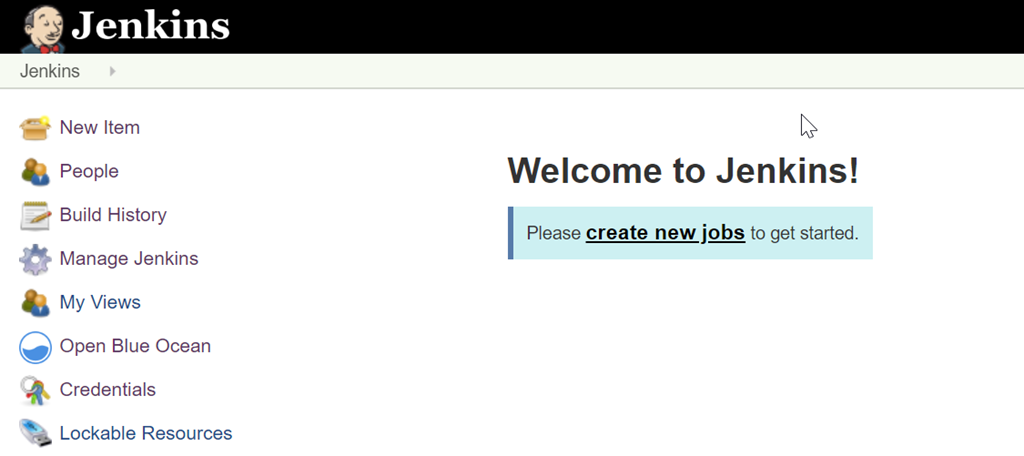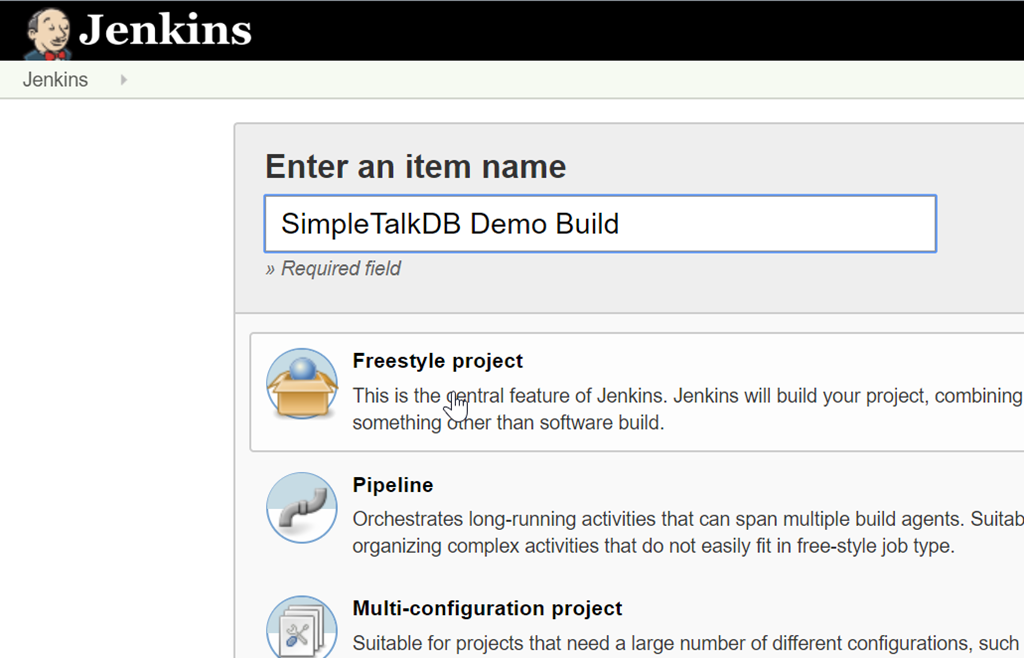
In two previous posts, I’ve showed how to configure Jenkins in a container as well as how to add the SQL Change Automation plugin. This post looks at an initial database build in Jenkins. I will build from my local repo, which gives me a bit of a pre-push check on my code.
Note: I already have a SQL Source Control (SOC) project committed to Github that contains the database I want to build. If you haven’t done that, see this post on a basic SOC->GitHub link.
Creating a Jenkins Job
Jenkins calls these build processes jobs, and you see that if you set up Jenkins in a container. By default, there are no jobs, and Jenkins lets you know this.
When I click this, I get a choice of different projects. You can read about these in the Jenkins documentation, but I am just going to use a Freestyle Project. Give it a name and click the type and then OK.

At this point, we need to configure the job. I do like to provide a description, and normally I would set this as a Github project, but in this case, this is really just a local build..
I do want to restrict which agent will run this, since I have a master agent in the Jenkins container. That one can’t see my SQL Server (and doesn’t have tools), so I’ll restrict this to the local agent on my machine.
There are tabs at the top for quick navigation, but this config is really just one long page. You can scroll down as needed. Below the agents, I find the VCS section. I’ll choose git, and then enter the path the agent will need.
When I click this, it is added as the first step. There is an implicit “git clone” checkout of code. I need to configure this step with just a few items. First, build in the local folder, rather than some specific area. We’ve already specified an agent location when we configured the Jenkins agent.
Also, you need a package ID, which will be the place where the current state of all objects is stored. Unlike application code, the artifact is really the current version of the objects in source control, not any .exe or .dll.

The only way to build a database project in SQL Server is with an actual SQL Server. In this case, I don’t have any code that would error on LocalDB, so I’ll just use that. I coudl specify my local SQL Server development database if I had the need.



